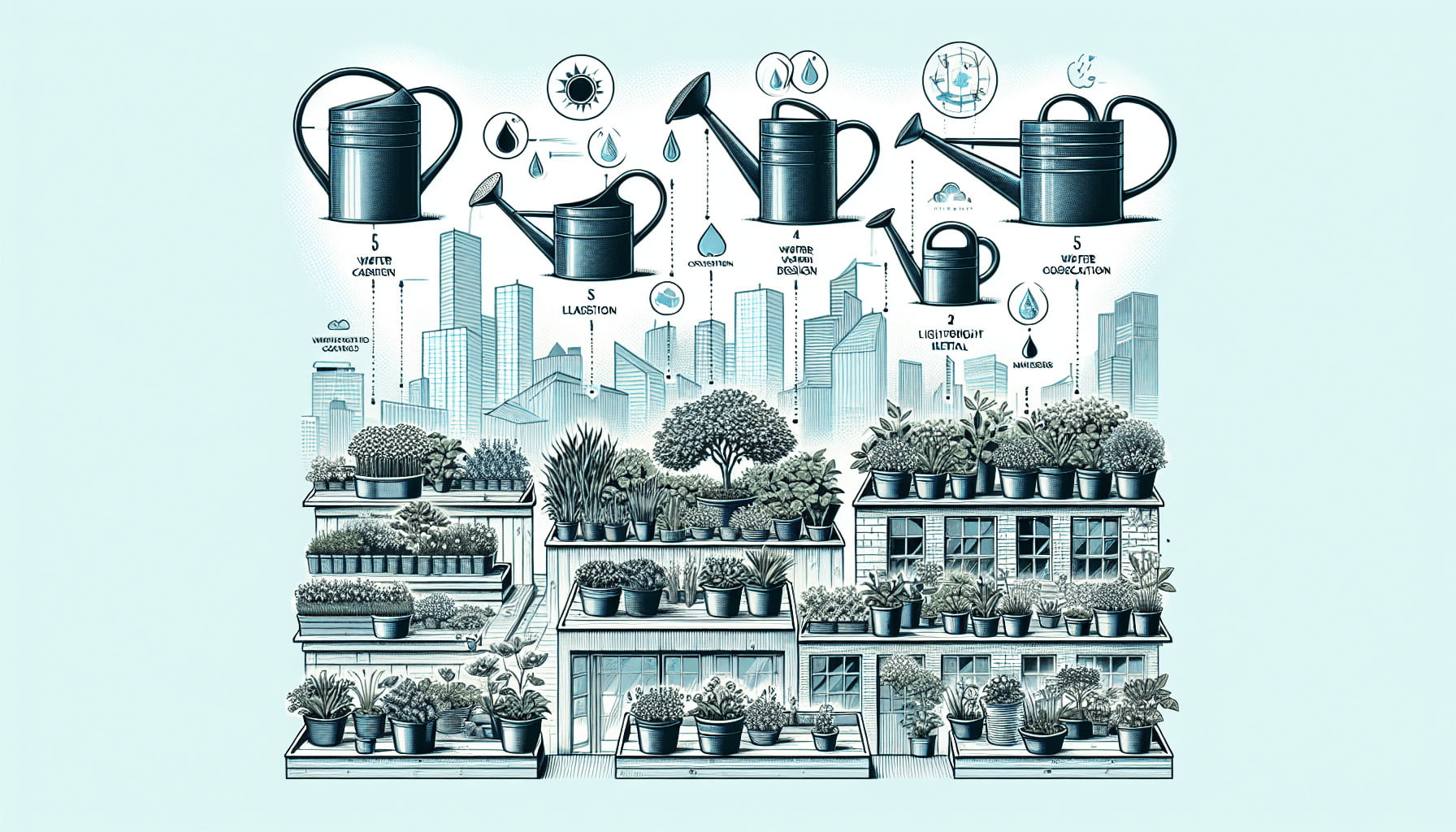Are you a rooftop gardening enthusiast in search of the perfect watering can? Look no further! In this comprehensive guide, we will walk you through the essential factors to consider when selecting the right watering can for your rooftop garden. From design and capacity to durability and functionality, we’ve got you covered. Say goodbye to those days of lugging heavy watering cans up flights of stairs! Get ready to elevate your rooftop gardening experience with the perfect watering can tailored to your specific needs. Let’s get started!
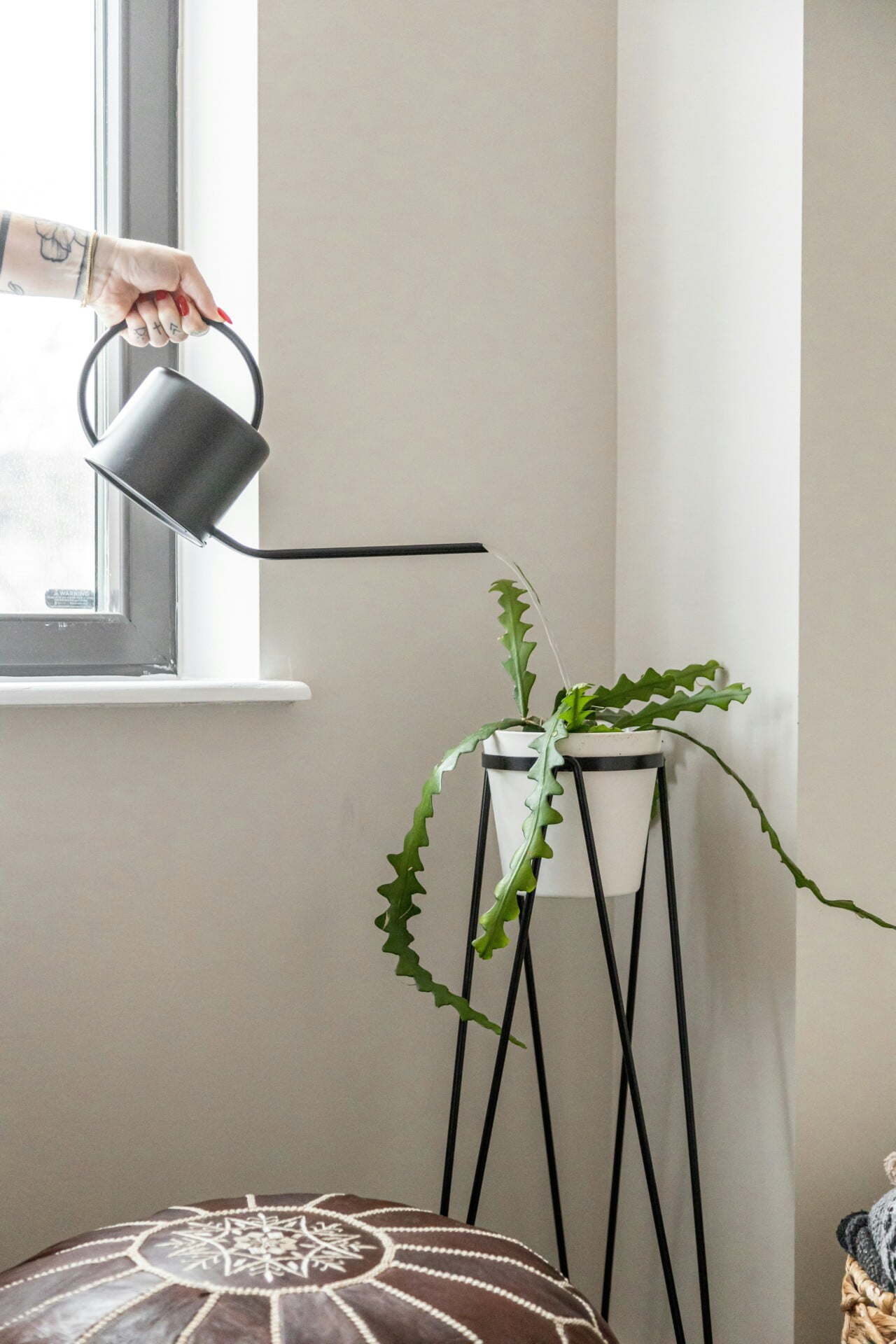
Material
When choosing a watering can for your rooftop garden, one of the first factors to consider is the material. There are several options available, each with its own set of advantages and considerations.
Plastic
Plastic watering cans are lightweight and affordable, making them a popular choice for many gardeners. They are also durable and resistant to weather conditions, making them suitable for outdoor use. However, plastic cans may not have the same aesthetic appeal as other materials and can deteriorate over time due to prolonged exposure to sunlight.
Metal
Metal watering cans, particularly those made of galvanized steel or brass, are known for their durability. They are resistant to rust and can withstand extreme weather conditions, making them ideal for outdoor use. Metal cans tend to be heavier than other materials, which can be a consideration if you have limited strength or mobility.
Ceramic
Ceramic watering cans are known for their beauty and decorative appeal. They can add a touch of elegance to your rooftop garden. However, ceramic cans are more delicate and prone to breaking, so they may not be the most practical choice for those seeking a long-lasting watering can.
Glass
Glass watering cans are not as common as other materials, but they can be a unique and visually appealing choice. They are often used for decorative purposes rather than practical watering due to their fragility. Glass cans require careful handling to prevent breakage and may not be suitable for rooftop gardens with strong winds or high temperatures.
Capacity
Choosing the right capacity for your watering can is essential to ensure efficient watering of your rooftop garden. Consider the size of your garden and the frequency with which you will need to water your plants.
Small (up to 1 gallon)
Small watering cans are ideal for small rooftop gardens or for spot watering specific plants. They are lightweight and easy to carry, making them suitable for those with limited strength or mobility. However, if you have a larger garden or need to water multiple plants, a small capacity can may necessitate frequent refills.
Medium (1-3 gallons)
A medium-sized watering can provides a balance between capacity and manageability. It can handle watering a moderate number of plants without being too heavy to carry when filled. If you have a rooftop garden with a moderate number of plants, a medium-sized can may be the ideal choice for you.
Large (3+ gallons)
For larger rooftop gardens or those with a significant number of plants, a large-capacity watering can is recommended. This will minimize the need for frequent refills and allow you to water your plants efficiently. Keep in mind that a larger can may be heavier and more challenging to carry, so consider your physical ability and comfort when making your selection.
Weight
The weight of your watering can is an important consideration, especially if you have limited strength or mobility.
Lightweight
If you have difficulty carrying heavy objects or have limited mobility, a lightweight watering can is the best option for you. Plastic cans are typically lighter than metal or ceramic ones, making them easier to handle and maneuver around your rooftop garden.
Heavyweight
While heavier watering cans may be more challenging to carry, they often have advantages in terms of durability and stability. Metal cans, such as those made of galvanized steel or brass, are generally heavier but offer increased resistance to tipping over or being damaged by harsh weather conditions.
Shape and Design
The shape and design of your watering can can influence its functionality and aesthetic appeal.
Traditional
Traditional watering cans often feature a classic design with a wide base and a tapered spout. They are a popular choice for many gardeners due to their timeless appeal and functional design. Traditional cans are typically easy to fill and pour, ensuring a controlled and precise watering experience.
Modern
If you prefer a more contemporary look, a modern watering can may be the right choice for you. These cans often feature sleek lines and innovative design elements. While they may sacrifice some traditional functionality for a more stylish appearance, modern cans can still provide efficient watering capabilities.
Long-necked
Long-necked watering cans have an extended spout, allowing for precise watering in hard-to-reach areas or plants that require specific attention. They are especially useful for hanging baskets or plants situated on high shelves. However, keep in mind that long-necked cans may be less stable and may require a steady hand to avoid spills or overwatering.
Sprinkler Head
Some watering cans come with a sprinkler head attachment, allowing you to water your plants with a gentle and even spray. This can be particularly beneficial for delicate plants or those that require a more mist-like watering technique. Sprinkler heads can be a convenient accessory to consider if you want more control over the water distribution in your rooftop garden.
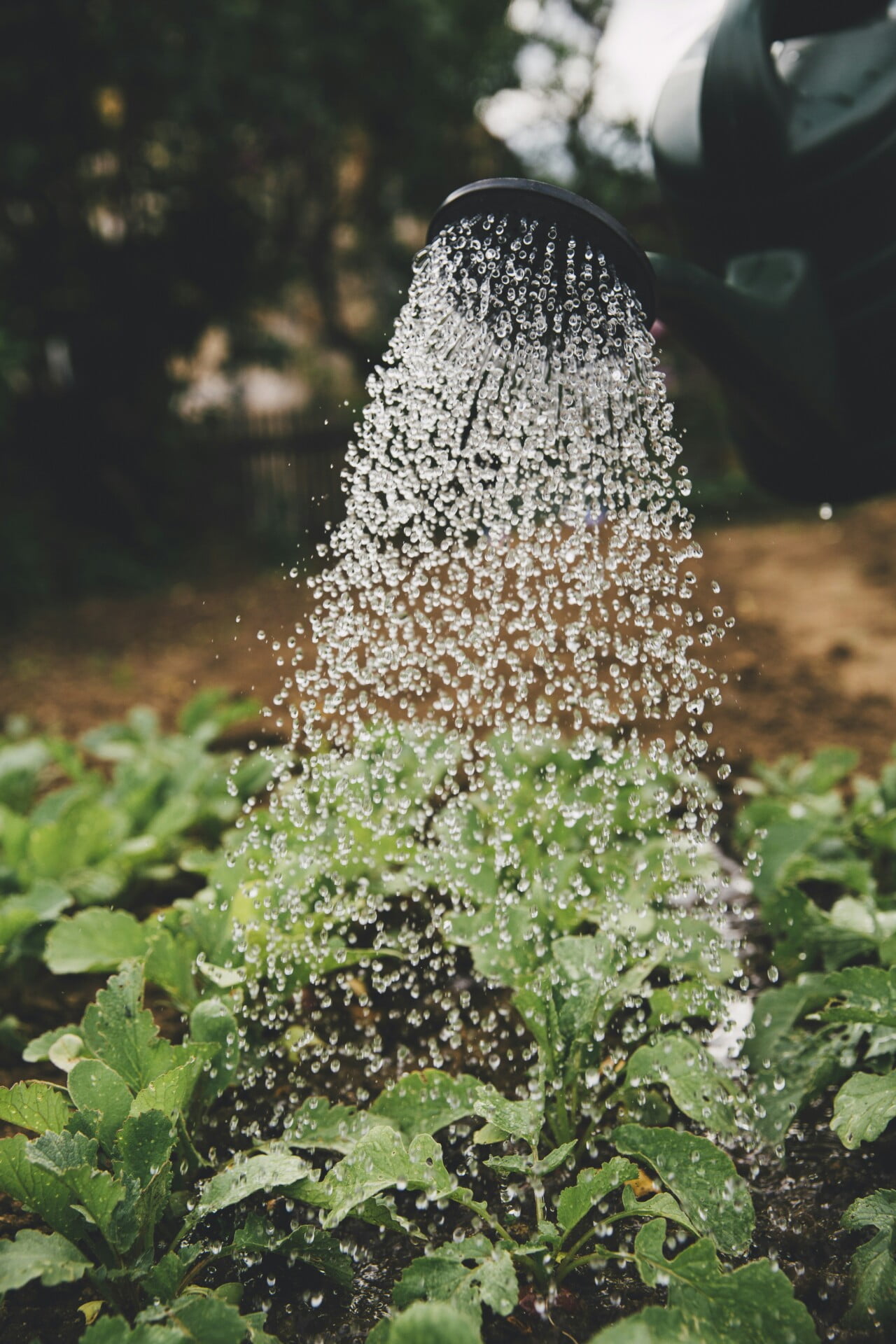
Handle
The handle of your watering can can significantly impact your comfort and ease of use.
Single Handle
A watering can with a single handle is the most common design and is suitable for most gardeners. It allows for a balanced grip while carrying and pouring, making it easy to control the flow of water. Single-handle cans are generally comfortable to use and provide stability during watering.
Double Handle
For those who prefer added stability or have difficulty gripping with one hand, a watering can with a double handle is an excellent choice. This design enables you to use both hands to carry and pour the can, reducing strain on your wrists and providing better control. Double-handle cans are particularly beneficial for individuals with limited strength or mobility.
Comfort Grip
If you anticipate using your watering can for extended periods or have concerns about grip fatigue, a watering can with a comfort grip handle is worth considering. These handles often feature ergonomic designs or rubberized coatings, providing a more comfortable and secure grip. A comfort grip handle can make watering your rooftop garden a more enjoyable experience.
Spout
The spout of your watering can determines the directional flow and dispersal of water.
Short Spout
A short spout on your watering can allows for more precise pouring, making it easier to target specific plants or avoid water wastage. It provides greater control over the water flow and is suitable for gardens with a variety of plant heights. Short-spouted cans are also less prone to excessive splashing or spills.
Long Spout
A watering can with a long spout is useful for hard-to-reach plants or areas that require extended reach. The long spout allows you to water plants without disturbing their foliage or structure. However, be cautious when using a long spout, as it can increase the risk of water spills or overwatering if not carefully controlled.
Adjustable Spout
Some watering cans feature an adjustable spout that allows you to customize the water flow from a gentle pour to a more forceful stream. This versatility can be beneficial when watering a variety of plants with different watering needs. An adjustable spout can provide you with the flexibility to adapt to the requirements of your rooftop garden.
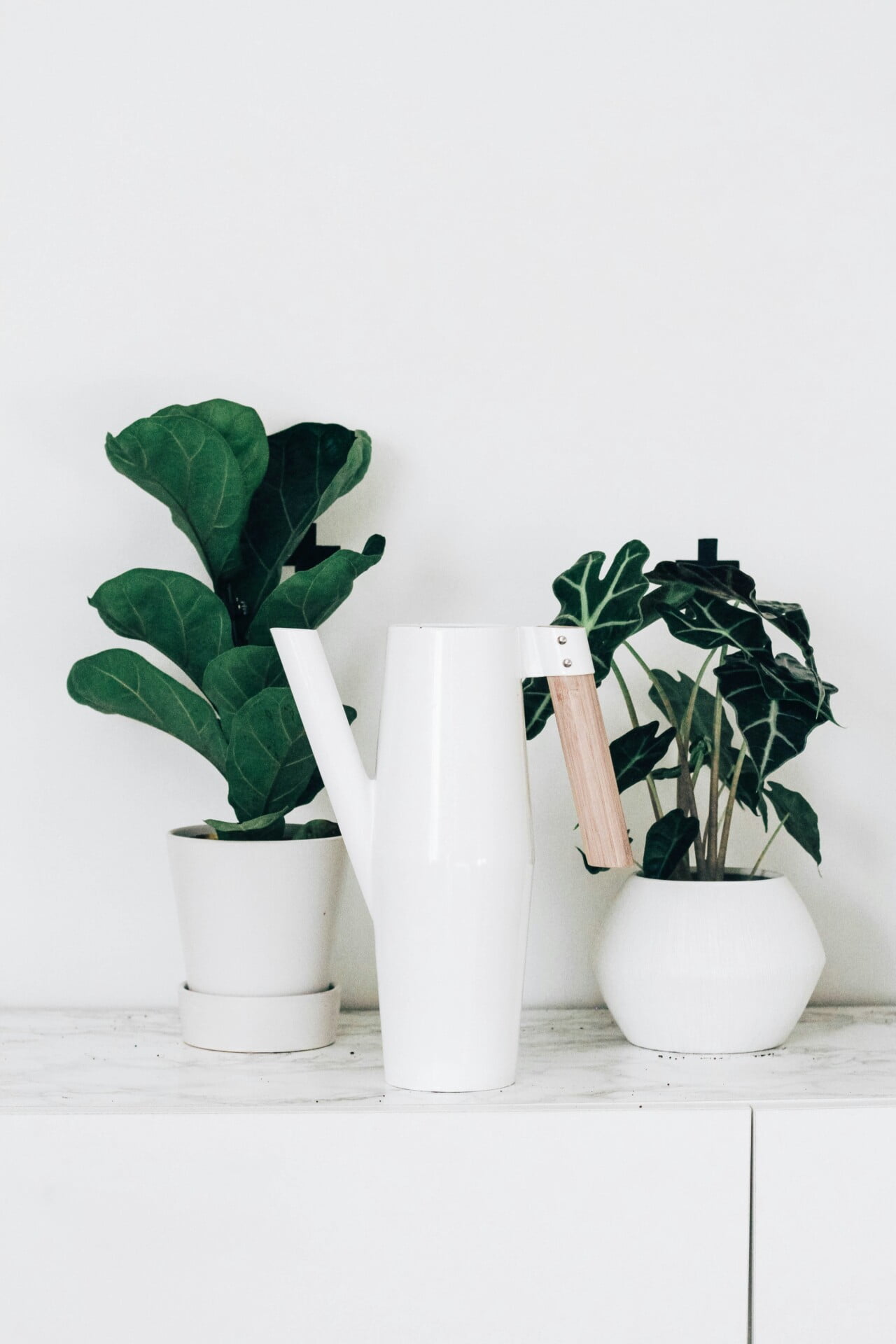
Watering Technique
The watering technique you prefer or the needs of your plants will influence the type of watering can you choose.
Direct Pouring
Direct pouring is the most common and straightforward watering technique. It involves pouring water directly at the base of the plants to ensure the roots receive sufficient hydration. Most watering cans are designed for this technique and can accommodate different plant sizes and watering volumes.
Sprinkling
Sprinkling involves using a watering can with a sprinkler head attachment to disperse water in a gentle spray. This technique is particularly effective for delicate plants or those that prefer a more mist-like watering method. It helps prevent damage to the plant’s foliage and provides a more even distribution of water.
Misting
Misting is a specialized technique that involves creating a fine mist of water to gently hydrate the leaves of your plants. This method is ideal for certain plant species, such as orchids or ferns, which require higher humidity levels. While not all watering cans are designed for misting, there are specific attachments available that can transform your can into a misting tool.
Durability
When selecting a watering can for your rooftop garden, it’s essential to consider its durability to ensure it withstands outdoor conditions and serves you well over time.
Weather Resistance
A durable watering can should be able to withstand various weather conditions without deteriorating or losing its functionality. Look for cans made of materials such as plastic or metal that are specifically designed to resist damage caused by sun exposure, rain, or extreme temperature fluctuations.
UV Protection
If your rooftop garden is exposed to direct sunlight for prolonged periods, considering a watering can with UV protection should be a priority. UV rays can cause plastic cans to degrade over time, leading to discoloration, brittleness, and reduced lifespan. Opting for a can with UV protection ensures it maintains its integrity and functionality in even the harshest sun exposure.
Rust-Proof
For metal watering cans, rust-proofing is crucial to guarantee long-lasting use. Look for cans made of galvanized steel or brass, as these materials naturally resist rust. Proper maintenance, such as drying the can after each use and storing it in a dry place, will also help prevent rusting and extend the lifespan of your watering can.
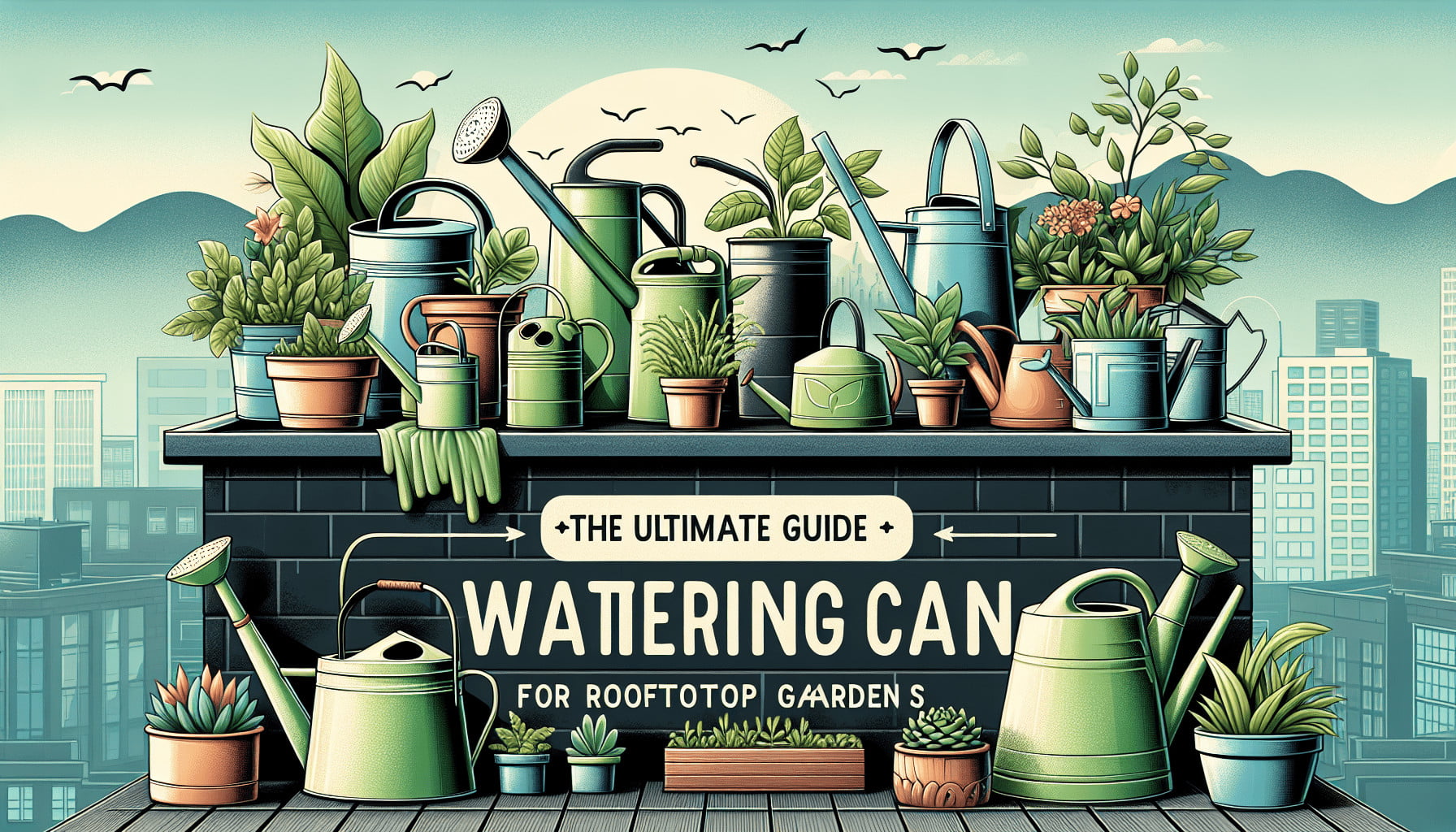
Price
When it comes to selecting the right watering can for your rooftop garden, understanding your budget is essential. Consider the different price ranges available to find the best option for you.
Budget-Friendly
If you are on a tight budget or new to gardening, there are plenty of affordable watering cans available. Plastic cans are often the most budget-friendly option, offering durability and functionality at an accessible price point. These cans can still provide all the necessary features for efficient watering without breaking the bank.
Mid-Range
Mid-range watering cans offer a balance between affordability and quality. They often come in a variety of materials such as metal or ceramic, providing more options for your rooftop garden aesthetics. While they may have a higher price tag than budget-friendly options, mid-range watering cans generally offer better durability and an enhanced user experience.
High-End
For those seeking the utmost in quality, design, and durability, high-end watering cans are the way to go. These cans often boast superior craftsmanship, innovative features, and materials that are built to last for years. While high-end watering cans may come with a higher price tag, they can be a worthwhile investment for serious gardeners or those with specific aesthetic preferences.
Accessories
To enhance your watering experience and optimize the functionality of your watering can, consider adding accessories to your rooftop garden toolkit.
Nozzle Attachments
Nozzle attachments can transform your watering can from a simple pouring tool to a versatile watering device. There are various options available, including misting nozzles, shower nozzles, or adjustable spray patterns. These attachments allow you to customize the water flow to match the needs of your plants and ensure a more efficient watering experience.
Watering Can Holder
A watering can holder is a practical accessory that can help keep your rooftop garden organized and tidy. It provides a designated spot to store your watering can, reducing the risk of tripping or accidental damage. Look for holders that are durable, weather-resistant, and suitable for the size and weight of your watering can.
Watering Can Rose
A watering can rose attachment, also known as a rose head, creates a distributed flow of water that mimics rain showers. It effectively waters your plants without causing damage to delicate foliage. A watering can rose can be a valuable addition to your watering can, particularly if you have a variety of plants in your rooftop garden that require gentle and precise watering.
Now that you have a comprehensive guide to selecting the right watering can for your rooftop garden, go ahead and explore the different options available. Consider your specific needs, preferences, and budget to make an informed choice. Remember, a well-chosen watering can is an essential tool in maintaining a healthy and vibrant rooftop garden. Happy watering!
